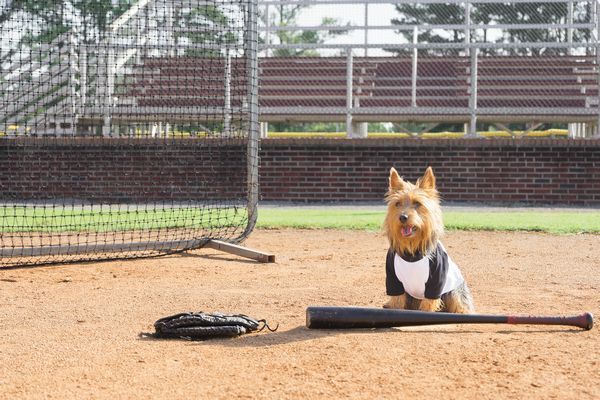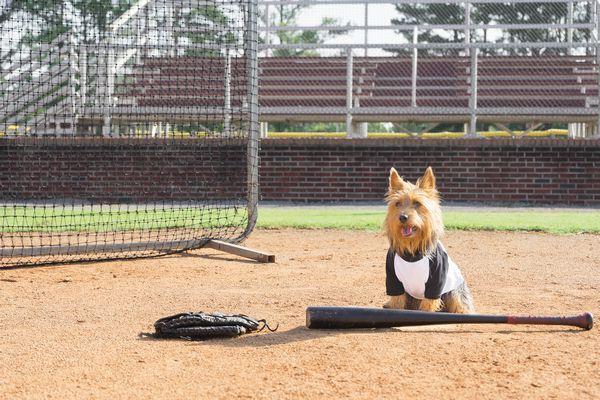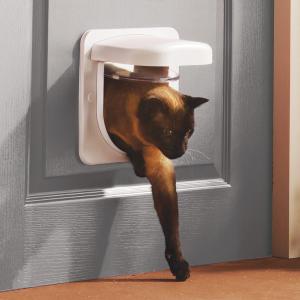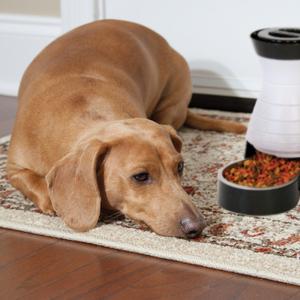It’s PetSafe’s Spring Training month. Could there be a better time to get outdoors and train your dog? It doesn’t take much time to have a star: just a consistent 15 minutes a day.
 Come When Called
Come When Called
Whether it's for safety or convenience, every owner wants their dog to come when called. But most dogs would rather be off digging holes, hunting squirrels or rolling in the grass. Dogs love play, praise and treats; teaching them to expect good things when they come makes all the difference. How would you feel if every time you were invited over to a friend’s for dinner they served cold leftovers. Eventually you might start declining their invitation, right?
Similarly, if you only call your dog when you're leaving the dog park, they'll be smart enough to recognize the pattern. Soon enough they will stop coming to you because it always ends the fun. Mix it up a bit. Call your dog just for a quick petting or check-in, give him a treat and then release him back to whatever he was doing. Make your dog associate you with fun, and you'll have an advantage when trying to get your dog to overcome temptations like chasing squirrels or other dogs.
Try a fun game of round-robin to get your dog more excited about coming when called. Form a circle of at least three or four people around your dog. Take turns calling your dog. When he responds to the request, get excited, shower your dog with praise and reward him with treats. As he learns the game, slowly increase the size of the circle.
And last but not least, practice, practice, practice. The more you practice, the more reliable your pup will be when facing a distraction. Coming to you when called should become a habit.
Teaching Your Dog Not to Jump
It can be difficult to enjoy company when your dog is jumping up and giving your visitors kisses. When dogs jump, they're seeking attention. The only way to stop attention-seeking behavior is to not reward it. There are two ways to stop this behavior; you can ignore your dog by turning your back on him and walking away. If you choose to ignore your dog, be sure not use your arms to push him down; he'll think you're playing. The second—and often more effective—option is to teach an alternate behavior that conflicts with jumping, like sitting. One thing to note is that with attention seeking, your dog's behavior is likely to get worse before it gets better (behaviorists call this an extinction burst). Be consistent, stay upbeat and reward your dog with treats, play or whatever they like best for good behavior.
Teaching Your Dog to Stay: Duration, Distance and Distraction
Teaching your dog to stay is incredibly useful, and offers a skill that's ripe for ongoing improvement. There are three factors involved in teaching your dog to stay: duration, distance and distraction. Start by working with your dog on duration by having him sit. Then give the stay command and a corresponding gesture, like holding your hand flat and palm up. Start small. Count to two, and reward your dog if he stays. When your dog reliably sits for a couple seconds, slowly increase the duration between treats. Remember that dogs get tired faster during training, so you should train in intervals of about 15 minutes. If your dog begins to break his stay, take a break and work your way back up to longer durations.
Once your dog can stay for 20 or 30 seconds reliably, you can begin working on distance. Again, start by asking your dog to sit and stay. This time, back up a few feet, and then return to reward him. It's critical that when you return to your dog, you either release him with a command like "okay," or ask him to stay again after you've given him a treat. It's important when starting that you return to your dog to treat him. If your dog always anticipates you calling him to come to you, he'll never actually relax into a sit position. Continue increasing your distance until you can back at least 10 ft. away before allowing your dog to come to you for a treat. Then make sure to vary it up so that you’re not always going to your dog, and your dog is not always coming to you.
The last component of teaching your dog to stay is distraction. Start with your dog next to you and have a friend help you to stage a distraction. Make sure that you always practice in a safe area and have control of your dog, whether by having him on a leash or practicing in a fenced-in area. You'll want a lot of treats for this phase, and smaller treats are preferred. Once you've initiated the distraction, continuously treat your dog. You want to overpower the value of pursuing the distraction with your rewards. If you or your dog gets frustrated, then the distraction is probably too much. Take it down a notch. And remember, practice and improvement are ongoing.
Loose-Leash Walk
It’s easy to assume that our dogs should already know how to walk on a leash. But being tied to us is not natural for dogs. It’s up to us to teach our dogs the behavior that we expect and to reward them for it.
What do you do when your dog puts tension on the leash? Start training by choosing a walking route with as few distractions as possible. You can even start in the house or your backyard. When your dog pulls, stop and get his attention with a treat or some kibble. For every two steps that you take with your dog maintaining a loose leash, reward him. Instead of feeding your dog from a bowl, take his kibble with you and use it to reward him throughout your walk. As your dog reliably focuses on you, decrease the frequency of the rewards.
Consistency is key. Although it may take more time to get where you’re going, stopping every time your dog pulls will pay off. It feels like you’re not getting very far, you’re probably doing it right.
If you find yourself getting frustrated and your dog is not focusing, then the environment may be too distracting. Practice in an environment that is less distracting for your pet, and make sure to match the value of your treats with the value of the distractions he’s encountering.
Easywalk, Gentle Leader and remote trainers can be excellent tools for teaching your dog to walk on a leash.
Barking
First, try to understand why your dog is barking. Is it attention-seeking, anxiety, boredom or someone outside the front door that is causing your dog to bark?
Teaching your dog not to bark is about interrupting the barking and replacing it with something else. Interrupting the behavior requires that you get your dog to focus on you. Try asking your dog to sit. Then introduce a new command: the “shush” command. It’s just what you’d expect; hold your finger to your lips and shush your dog. Stay calm. Shouting definitely won’t help.
Reward your dog as soon as they stop barking, and then put your finger back to your lips. Continue to reward them for being quiet while increasing the time between treats. Then ask your dog to lay down while you go back to what you were doing. Or, engage them in another activity.
We can’t blame dogs for wanting to alert us to what they presume are dangers. Dogs have different motivators. If your dog is treat or toy motivated, try giving them something to hold their attention.
These basic obedience commands will set a great foundation and enhance the relationship you have with your dog. Check back for tips on more commands. And again, remember that practice and improvement are ongoing. See you on the field!






